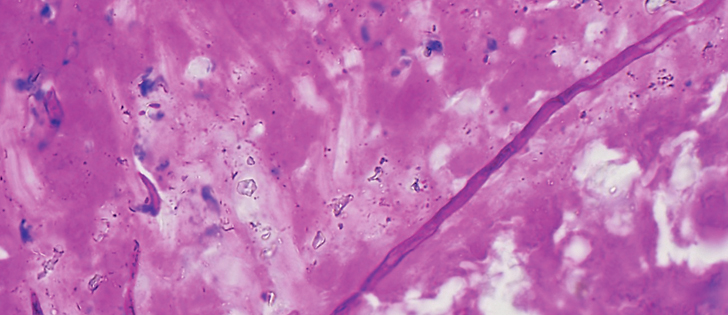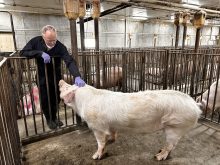It isn’t often we focus on fungal diseases; usually viruses and bacteria occupy our attention when it comes to infectious diseases.
But fungal infections are on the rise. Particularly in wild animals, fungi are a major cause of newly recognized infectious diseases.
White nose syndrome, a fungal infection of hibernating bats, is demolishing populations in eastern North American.
Since 2006, this disease has spread from the state of New York to the entire northeastern region of North America.
As well, it reached the western edge of Ontario this year and also showed up in the state of Washington.
Read Also

Beef check-off collection system aligns across the country
A single and aligned check-off collection system based on where producers live makes the system equal said Chad Ross, Saskatchewan Cattle Association chair.
The fungi grow on the skin of infected bats, covering their nose, wing webs and ears with a thick, fuzzy white material that gives the disease its name.
Damage to the skin leads to dehydration and stimulates the bats to wake up prematurely from hibernation.
Since this is usually in the middle of winter, most die of starvation due to a lack of insects, exposure to cold and dehydration.
There are no vaccines or treatments available to save the millions of bats at risk.
A similar deadly fungal infection is wiping out amphibians such as frogs and toads around the world. Chytrid (pronounced “KIT-rid”) fungus hit the radar of wildlife specialists in the late 1990s when massive numbers of amphibians died in areas where they should have been thriving, such as in protected wildlife refuges.
More than 500 species are susceptible to infection, including many that are critically endangered. The origin of this fungus is still debated, yet it has spread around the world. Some frogs, like the North America bullfrog, are often infected without any signs of illness.
This matters because bullfrogs are shipped around the world as human food (frog legs), likely spreading the fungus.
Amphibians become infected through contact with contaminated water or infected individuals. Like white nose syndrome of bats, chytrid fungus infects the skin. Amphibian skin is an important organ for maintaining hydration and functions like lungs for gas exchange.
Damage and thickening of the skin due to the fungal infection can quickly cause death.
A closely related strain to the original chytrid fungus has recently emerged in Europe, where it was responsible for killing 96 percent of fire salamanders in the Netherlands.
This new fungus seems to infect only salamanders, leading Canadian authorities to ban salamander imports in an effort to prevent its spread to Canada.
Snake fungal disease is a newly described condition that targets the skin, leading to variably severe ulcerations and cloudiness of the eyes. It has been associated with snake deaths in the northeastern United States and has also been detected in Ontario.
The severity of the disease can vary significantly. Some snakes carry the fungus with no signs of illness while others succumb to deep infections.
Finally, there is cryptococcosis. Cases of this indiscriminate fungal disease began popping up in Vancouver Island in 1999, affecting a range of species from cats and horses to porpoises and people.
In addition to skin infections, cryptococcosis can cause severe meningitis and pneumonia. It has spread to the Lower Mainland of B.C., as well as several U.S. Pacific Northwest states.
Unlike traditional fungal pathogens in domestic animals (like the fungus that causes ringworm), these emerging fungal diseases are unstable, deadly and expanding their reach.
Human activities, including land-use changes, international travel, climate change and the global exotic pet trade, are mostly to blame for their introduction and spread.
Most of these emerging fungal diseases are destroying the populations they affect and are difficult, if not impossible, to prevent, treat and control.
Extinctions of rare frogs and less-than-charismatic bats may not seem like a big deal but these species provide critical functions to the ecosystems in which they live.

















